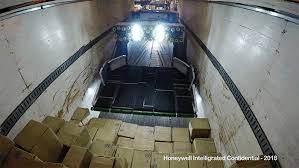
Breaking News
 FULL SPEECH: Tucker on the America First Movement & New "Deplatforming" Agenda
FULL SPEECH: Tucker on the America First Movement & New "Deplatforming" Agenda
 Red Light Therapy And Men's Health: Does It Really Work?
Red Light Therapy And Men's Health: Does It Really Work?
 Kash Patel's New FBI Clown Show - The Bizarre Interview He Will Regret For The Rest of His Life
Kash Patel's New FBI Clown Show - The Bizarre Interview He Will Regret For The Rest of His Life
 One Rifle I Trust for Everything
One Rifle I Trust for Everything
Top Tech News
 This tiny dev board is packed with features for ambitious makers
This tiny dev board is packed with features for ambitious makers
 Scientists Discover Gel to Regrow Tooth Enamel
Scientists Discover Gel to Regrow Tooth Enamel
 Vitamin C and Dandelion Root Killing Cancer Cells -- as Former CDC Director Calls for COVID-19...
Vitamin C and Dandelion Root Killing Cancer Cells -- as Former CDC Director Calls for COVID-19...
 Galactic Brain: US firm plans space-based data centers, power grid to challenge China
Galactic Brain: US firm plans space-based data centers, power grid to challenge China
 A microbial cleanup for glyphosate just earned a patent. Here's why that matters
A microbial cleanup for glyphosate just earned a patent. Here's why that matters
 Japan Breaks Internet Speed Record with 5 Million Times Faster Data Transfer
Japan Breaks Internet Speed Record with 5 Million Times Faster Data Transfer
 Advanced Propulsion Resources Part 1 of 2
Advanced Propulsion Resources Part 1 of 2
 PulsarFusion a forward-thinking UK aerospace company, is pushing the boundaries of space travel...
PulsarFusion a forward-thinking UK aerospace company, is pushing the boundaries of space travel...
 Dinky little laser box throws big-screen entertainment from inches away
Dinky little laser box throws big-screen entertainment from inches away
 'World's first' sodium-ion flashlight shines bright even at -40 ºF
'World's first' sodium-ion flashlight shines bright even at -40 ºF
Robots Edge Closer to Unloading Trucks in Amazon-Era Milestone

Robot makers are getting close to solving part of that puzzle.
Siemens AG and Honeywell International Inc. have built machines that pull packages from the back of a tractor-trailer and place them on conveyor belts, whizzing the parcels off for sorting. Making robots that can load trucks is more complicated, although clearing that hurdle isn't far off.
"The biggest challenge in our world is: Every single package is different in size, shape, weight, color, material," said Ted Dengel, managing director of operations technology at FedEx's ground-delivery unit. "It makes it a very tricky problem."
The devices, unveiled at a recent automation conference in Chicago, hold out the promise of increasing productivity while reducing the need for one of the most grueling jobs in logistics. Couriers are relying on automation to grapple with the rise of online shopping, which is fueling record demand but pressuring profit margins. Amazon's plan to handle more of its own shipping and offer more one-day deliveries is only upping the ante.



